Between 1995 & 2009, Clonmel Town suffered severe flooding on a regular basis from the River Suir and its tributaries. Tideflex valves made a crucial contribution to the design & construction of this important and complex flood defence scheme, which was shortlisted for the 2012 Engineering Project of the Year by Engineers Ireland. The scheme, and the valves, performed admirably during the major floods over the 2015/2016 Christmas period, considered its first significant flood test.
Project details
Client: Clonmel Borough Council & the Office of Public Works (OPW)
Consulting Engineer: Mott MacDonald Ireland
Design details: 6No. large Tideflex valves sizes 715-1240mm installed on the river quay outfalls
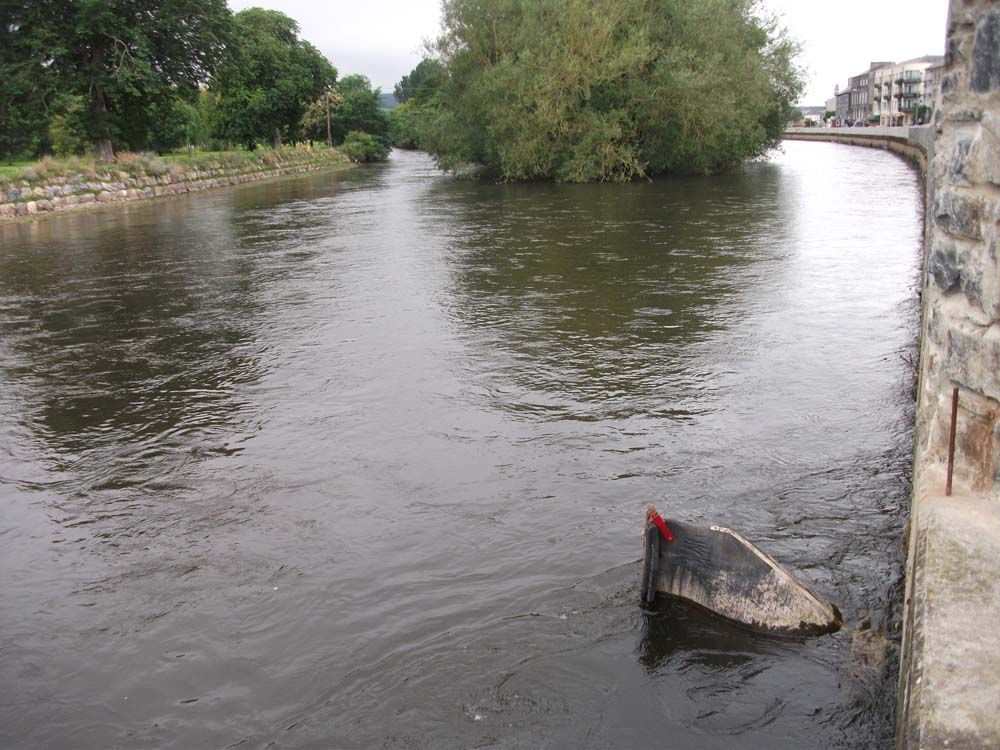
Records show that the quays in the town flooded on average six out of every ten years, with most severe flooding in Clonmel occurring in 1995, 1996, 1997 and 2000, 2004, 2008 and twice in 2009, all of which had a severe impact on the town's population, commerce and infrastructure. A Steering Group, consisting of the OPW, South Tipperary County Council, Clonmel Borough Council and Waterford County Council, was formed to oversee the process of developing and implementing a flood relief scheme that was economically viable and environmentally acceptable. Mott MacDonald Ireland, were appointed in 2003 to carry out the design, which would offer protection in a standard 100 year flood event but could be adapted in the future to accommodate a 20% increase in design flow due to climate change.
Out of all the options considered, providing a fully defended urban area using hard engineered defences to contain the flood water within the river channel was chosen as the most cost effective and reliable way to manage the flood risk. Hydraulic modelling indicated that with design flood levels estimated at 2.5m O.D. the channel would require walls 2.8m high.
In order to mitigate the negative effects on the town and its residents of such high walls, it was decided to design for a removable wall on top of a permanent wall of standard 1.2m height along the river quays.This effectively meant that the river would be above street level during flood events, and so non-return valves on the outfalls would form a key component of the design, preventing flood waters from pushing upstream through road gullies, manhole covers, back inlet gulley traps, etc. In order to prevent stormwater backing up in the drainage system, 12 pump stations were required at strategic locations to over pump to the river.
The works, which were divided into three schemes, commenced in 2007 and were substantially complete in 2012. At the time, it was considered that the effectiveness of the scheme depended on the timely erection of the demountable defences and, while that is still certainly the case, an incident in 2014 provided proof that the drainage outfalls into the river play a crucial part in this scheme, particularly the non-return valves on the outfalls.
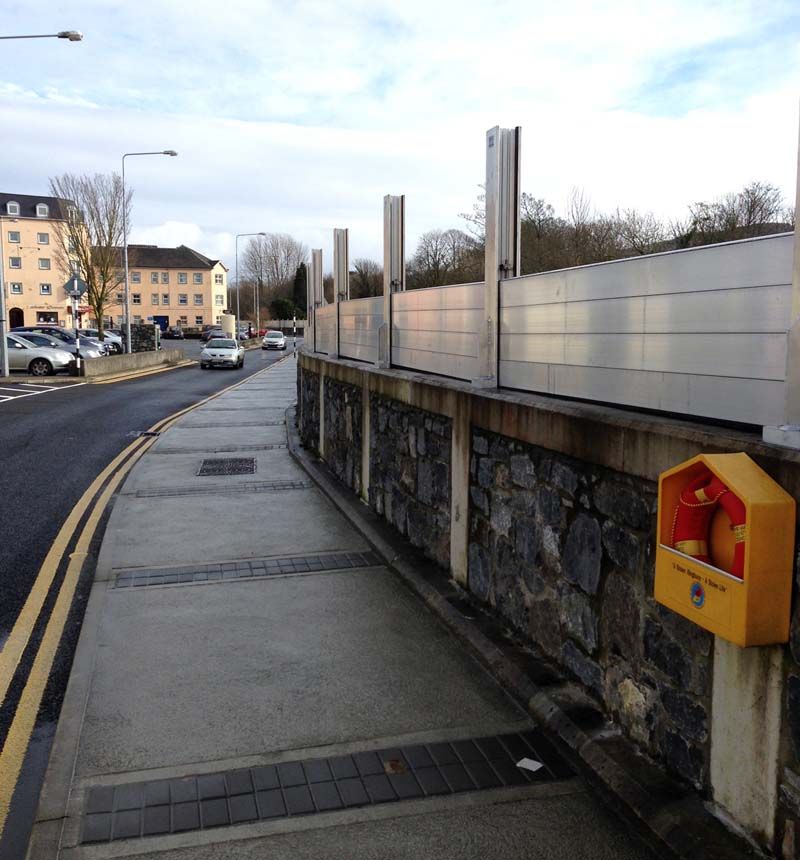
Records show that the quays in the town flooded on average six out of every ten years, with most severe flooding in Clonmel occurring in 1995, 1996, 1997 and 2000, 2004, 2008 and twice in 2009, all of which had a severe impact on the town's population, commerce and infrastructure. A Steering Group, consisting of the OPW, South Tipperary County Council, Clonmel Borough Council and Waterford County Council, was formed to oversee the process of developing and implementing a flood relief scheme that was economically viable and environmentally acceptable. Mott MacDonald Ireland, were appointed in 2003 to carry out the design, which would offer protection in a standard 100 year flood event but could be adapted in the future to accommodate a 20% increase in design flow due to climate change.
Out of all the options considered, providing a fully defended urban area using hard engineered defences to contain the flood water within the river channel was chosen as the most cost effective and reliable way to manage the flood risk. Hydraulic modelling indicated that with design flood levels estimated at 2.5m O.D. the channel would require walls 2.8m high. In order to mitigate the negative effects on the town and its residents of such high walls, it was decided to design for a removable wall on top of a permanent wall of standard 1.2m height along the river quays. This effectively meant that the river would be above street level during flood events, and so non-return valves on the outfalls would form a key component of the design, preventing flood waters from pushing upstream through road gullies, manhole covers, back inlet gulley traps, etc. In order to prevent stormwater backing up in the drainage system, 12 pump stations were required at strategic locations to over pump to the river.
The works, which were divided into three schemes, commenced in 2007 and were substantially complete in 2012. At the time, it was considered that the effectiveness of the scheme depended on the timely erection of the demountable defences and, while that is still certainly the case, an incident in 2014 provided proof that the drainage outfalls into the river play a crucial part in this scheme, particularly the non-return valves on the outfalls.
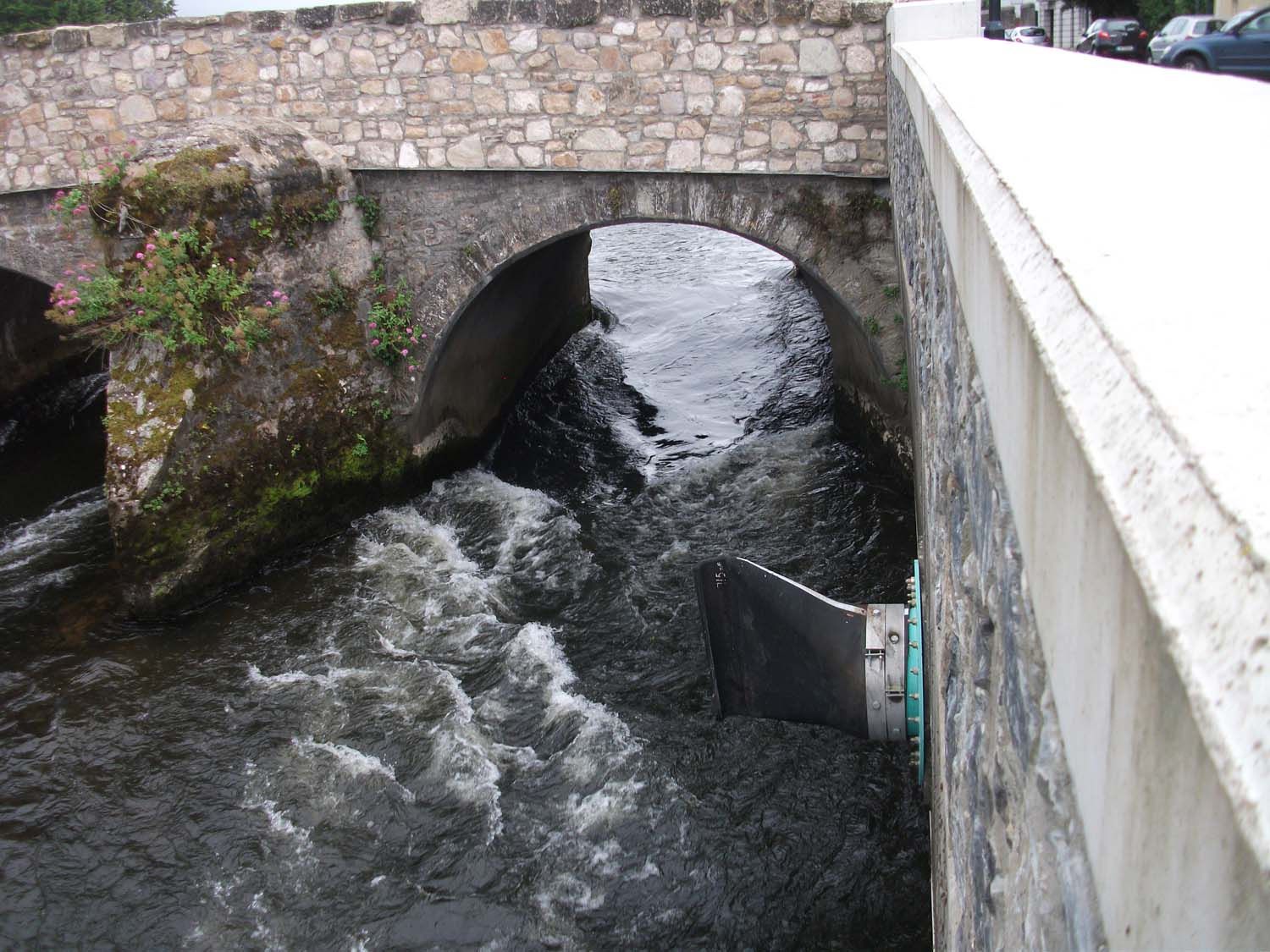
River outfalls can be notoriously problematic, being prone to debris accumulation, siltation and exposure to fast flowing waters. And particularly in this scheme it was important to ensure that there would be no blockages during normal function and, conversely, reliable and total exclusion of water ingress during flood conditions. Tideflex valves were recognised by the design team as the most reliable, maintenance-free drainage check valves on the market today for these types of conditions, and 6 of Tideflex's large rubber duckbill valves were chosen for the outfalls located in areas that are harder to access and most prone to silt and debris.
Another reason Tideflex valves were chosen is that the river in flood would flowing under high volume and velocity, and any valves exposed to the flow would need to be able to handle a large sideways force. With access to years of research & development by the Tideflex parent company and other independent bodies, we were able to provide reassurance that Tideflex valves were up to the challenge. This was especially important as the valves needed to be mounted directly on the quay walls, sticking out into the river, because to construct manholes behind the walls would have meant unacceptable project delays. (For footage of valve performance during fast-flowing conditions, click here.)
Contact us to find out more about our 20+ years experience with Tideflex valves.
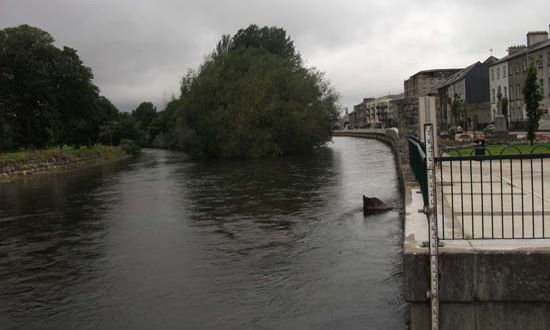
Normal conditions - Tideflex valve half-submerged
The importance of having a reliable non-return valve on the outfalls of this drainage scheme was illustrated during a flood event in February 2014. While this was not an extreme event, a manhole cover was lifted off by the force of flood water rushing upstream from an unsealed outfall, resulting in a dramatic water "fountain" that caused significant damage to the road where it happened. Investigation discovered a previously unknown outfall buried in silt in the river, which thus had no functioning valve to prevent backflow. Once again a Tideflex valve was procured to prevent a repeat incident.
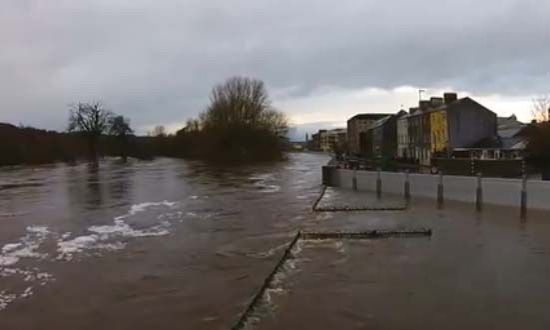
Flood levels Christmas 2015/2016 - Tideflex valve fully submerged
Over the 2015/2016 Christmas period, Ireland was battered by severe storms and many areas experienced high river levels and severe flooding. Thankfully, the flood defences of Clonmel performed admirably and it was business as usual along the quays for much of the time, even though the water level there rose to higher than the old quay walls at one point.
Tideflex valves are effective and reliable, performing as expected in all conditions.
Minor flooding in places, a few basements in town centre, but without flood defences, Clonmel would be really bad! pic.twitter.com/goFNdiI18i
— Pat Quirke (@patquirke) December 30, 2015
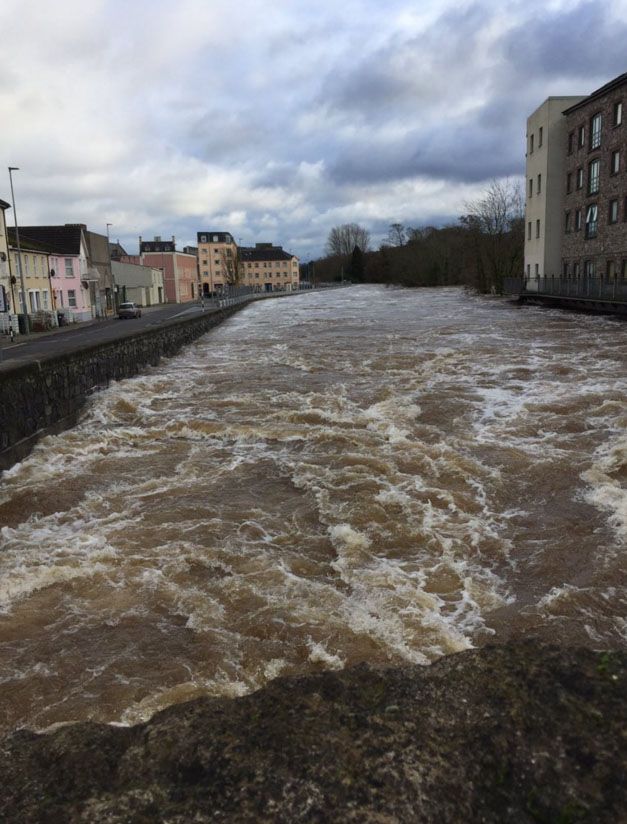
Video and photos were taken by Clonmel businessman Pat Quirke on 30 December 2015, showing the extent of the flooding at Old Bridge.
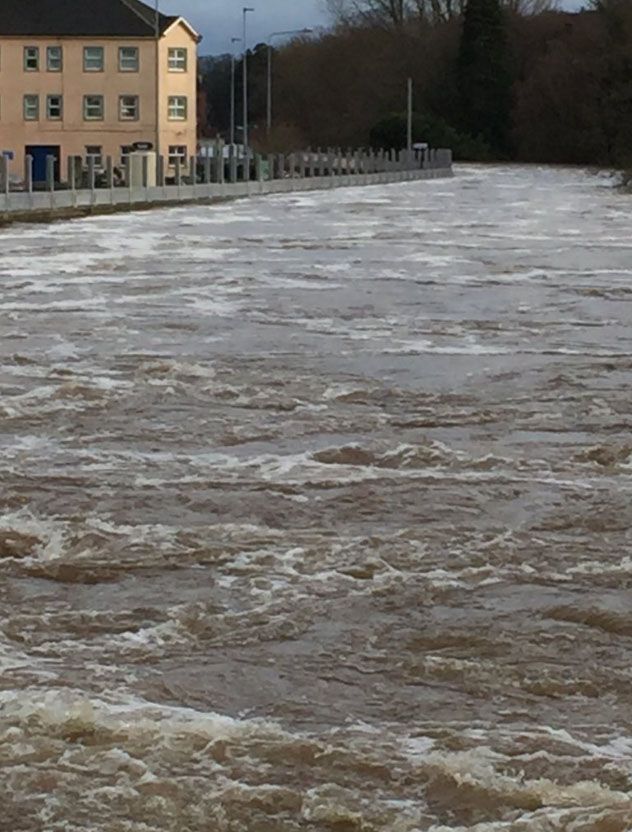
He was actually standing above the Tideflex valve, which was submerged under the surging river waters, doing its job unseen.
Tideflex Valves Key to Clonmel Flood Defence Scheme